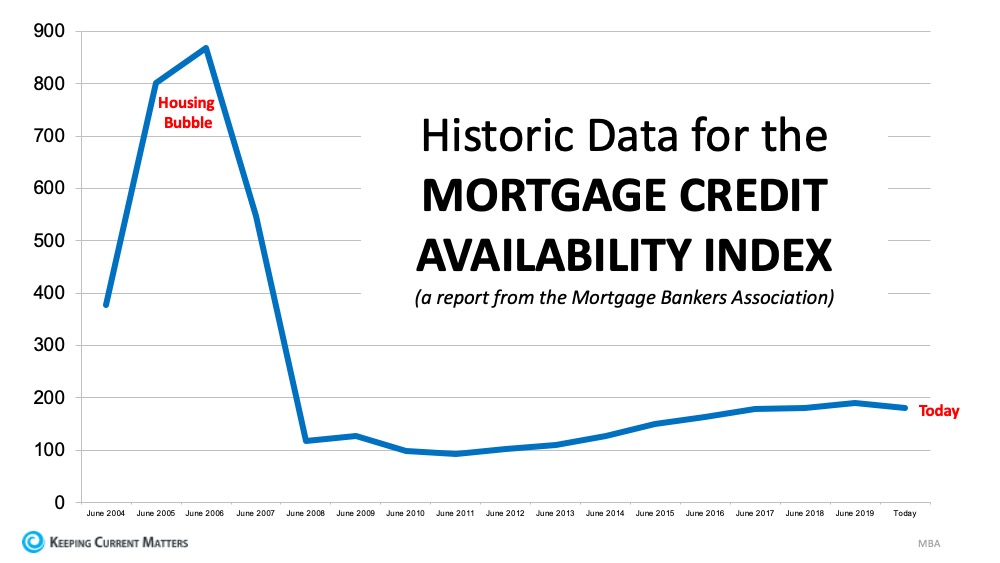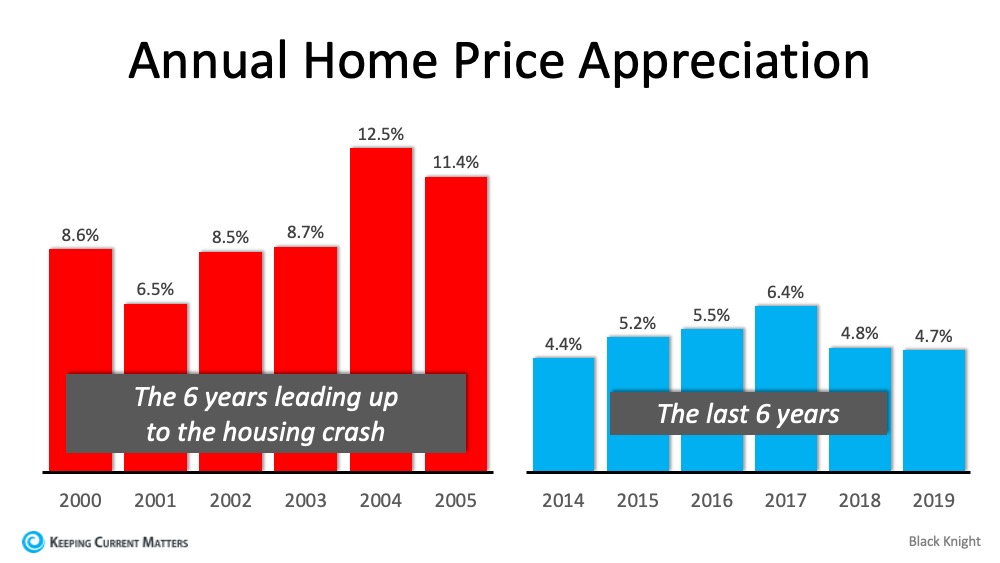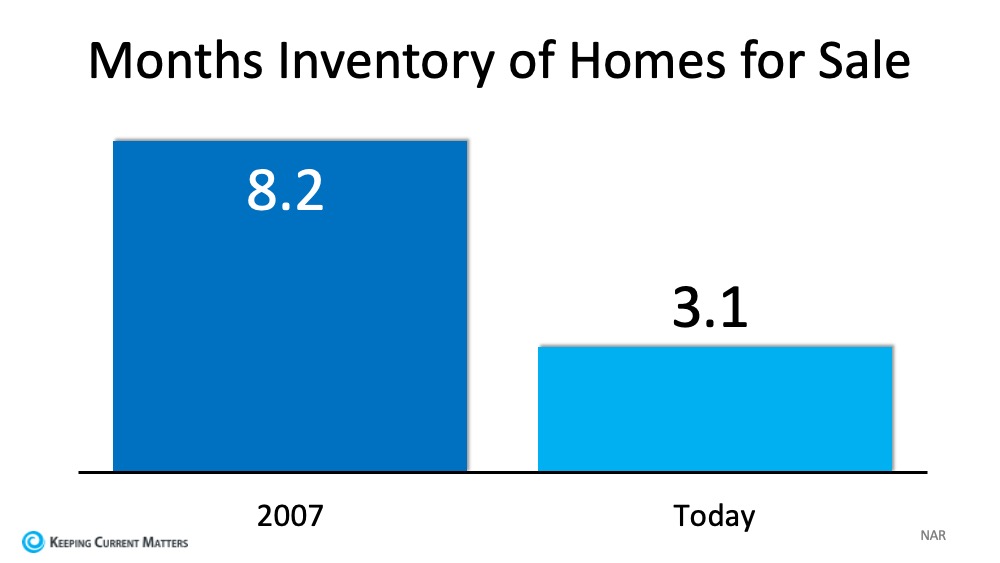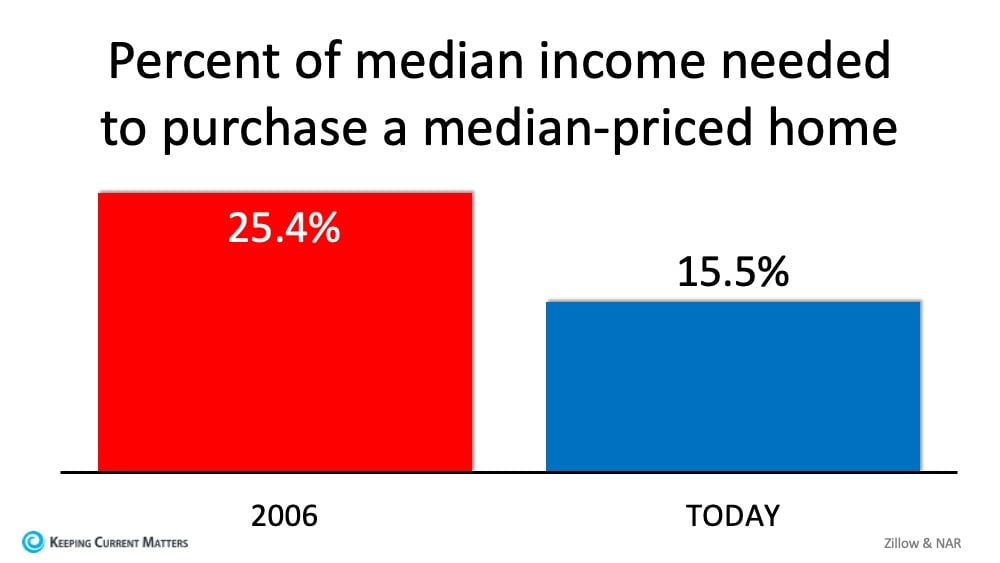What's my home worth?
Sent
What's my home worth?
Sent
Terri Gold
Search Homes For Sale
5 Simple Graphs Proving This Is NOT Like the Last Time
March 16, 2020

With all of the volatility in the stock market and uncertainty about the Coronavirus (COVID-19), some are concerned we may be headed for another housing crash like the one we experienced from 2006-2008. The feeling is understandable. Ali Wolf, Director of Economic Research at the real estate consulting firm Meyers Research, addressed this point in a recent interview:
“With people having PTSD from the last time, they’re still afraid of buying at the wrong time.”
There are many reasons, however, indicating this real estate market is nothing like 2008. Here are five visuals to show the dramatic differences.
1. Mortgage standards are nothing like they were back then.
During the housing bubble, it was difficult NOT to get a mortgage. Today, it is tough to qualify. The Mortgage Bankers’ Association releases a Mortgage Credit Availability Index which is “a summary measure which indicates the availability of mortgage credit at a point in time.” The
higher the index, the easier it is to get a mortgage. As shown below,
during the housing bubble, the index skyrocketed. Currently, the index
shows how getting a mortgage is even more difficult than it was before
the bubble.
2. Prices are not soaring out of control.
Below
is a graph showing annual house appreciation over the past six years,
compared to the six years leading up to the height of the housing
bubble. Though price appreciation has been quite strong recently, it is
nowhere near the rise in prices that preceded the crash. There’s
a stark difference between these two periods of time. Normal
appreciation is 3.6%, so while current appreciation is higher than the
historic norm, it’s certainly not accelerating beyond control as it did
in the early 2000s.
There’s
a stark difference between these two periods of time. Normal
appreciation is 3.6%, so while current appreciation is higher than the
historic norm, it’s certainly not accelerating beyond control as it did
in the early 2000s.
3. We don’t have a surplus of homes on the market. We have a shortage.
The
months’ supply of inventory needed to sustain a normal real estate
market is approximately six months. Anything more than that is an
overabundance and will causes prices to depreciate. Anything less than
that is a shortage and will lead to continued appreciation. As the next
graph shows, there were too many homes for sale in 2007, and that caused
prices to tumble. Today, there’s a shortage of inventory which is
causing an acceleration in home values.
4. Houses became too expensive to buy.
The
affordability formula has three components: the price of the home, the
wages earned by the purchaser, and the mortgage rate available at the
time. Fourteen years ago, prices were high, wages were low, and mortgage
rates were over 6%. Today, prices are still high. Wages, however, have
increased and the mortgage rate is about 3.5%. That means the average
family pays less of their monthly income toward their mortgage payment
than they did back then. Here’s a graph showing that difference:
5. People are equity rich, not tapped out.
In
the run-up to the housing bubble, homeowners were using their homes as a
personal ATM machine. Many immediately withdrew their equity once it
built up, and they learned their lesson in the process. Prices have
risen nicely over the last few years, leading to over fifty percent of
homes in the country having greater than 50% equity. But owners have not
been tapping into it like the last time. Here is a table comparing the
equity withdrawal over the last three years compared to 2005, 2006, and
2007. Homeowners have cashed out over $500 billion dollars less than
before: During
the crash, home values began to fall, and sellers found themselves in a
negative equity situation (where the amount of the mortgage they owned
was greater than the value of their home). Some decided to walk away
from their homes, and that led to a rash of distressed property listings
(foreclosures and short sales), which sold at huge discounts, thus
lowering the value of other homes in the area. That can’t happen today.
During
the crash, home values began to fall, and sellers found themselves in a
negative equity situation (where the amount of the mortgage they owned
was greater than the value of their home). Some decided to walk away
from their homes, and that led to a rash of distressed property listings
(foreclosures and short sales), which sold at huge discounts, thus
lowering the value of other homes in the area. That can’t happen today.
Bottom Line
If you’re concerned we’re making the same mistakes that led to the housing crash, take a look at the charts and graphs above to help alleviate your fears.
Tags:


